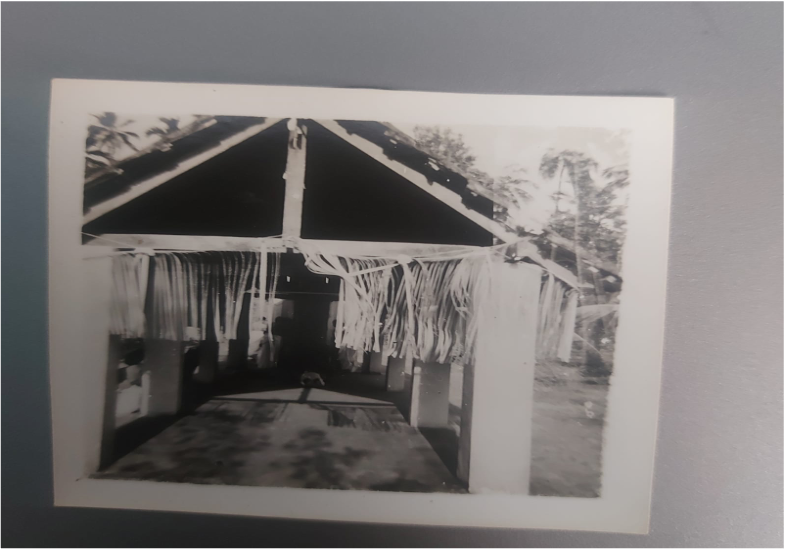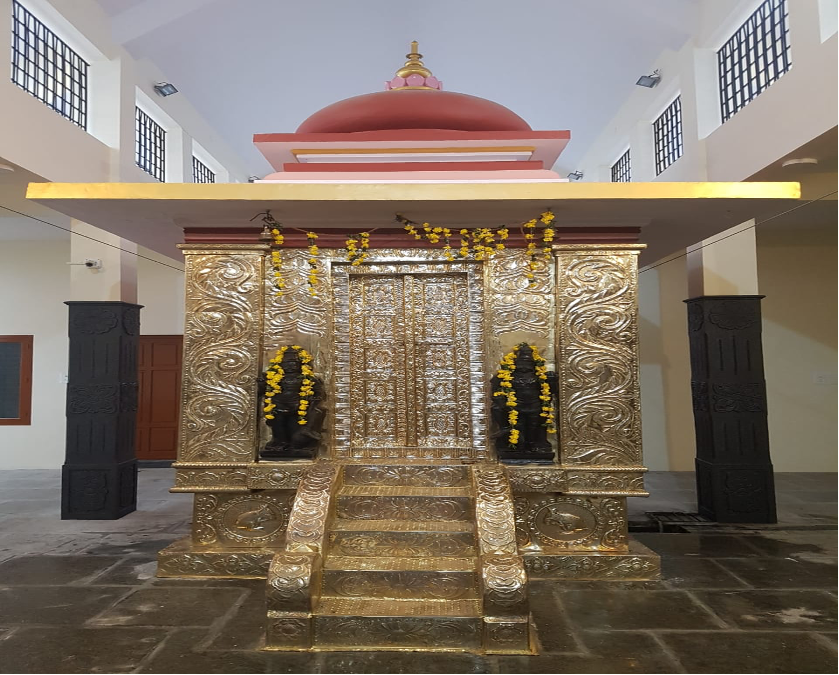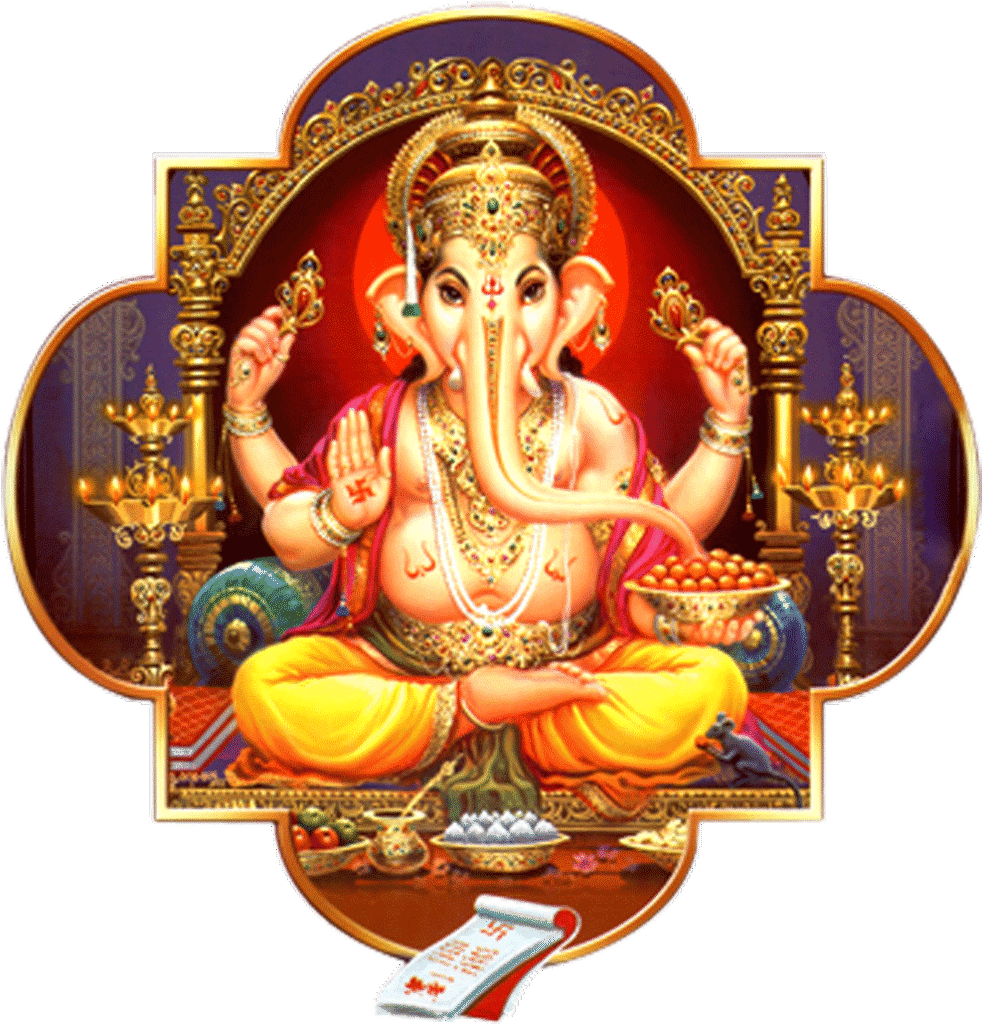ORIGIN OF SREE MANGALA VINAYAKAR TEMPLE
Dates back in 1968, the area where the Vinayaka Nagar Colony is built-up was a “thoppu” with full of coconut and other trees under the care and custody of Karamana Grama Samudayam (KGS). It was known as “Kulavara purayidam”. The KGS at that period decided to sell away this property after demarking it in to housing plots of 6 to 8 cents each.
One Shri. R. Subrahmonia Iyer, (son of Shri. Veera Raghava Iyer of Chalai) was having a Ganapathy temple in his estate at Murukkumpuzha. As trouble arose to him in keeping the sanctity of the temple and regular pooja, he was looking around for a suitable place for installing the Deity. Late Shri. S. Sivaramakrishna Iyer, (Past President of Association guided Shri. Iyer to contact KGS authorities for allotting a small plot for his proposed temple.
Plot No. I measuring 5 cents of the proposed colony was thereupon sold by KGS to Shri. Iyer in June, 1968 for Rs. 1500 for installing Maha Ganapathy. Hence the proposed colony was named after Vinayakar.
The temple from Murukkumpuzha Ashramom was then shifted to this plot Vinayak Nagar, which is very close to the southern bank of Karamana river.
Below is the photo of the temple thus constructed in 1970s in Vinayaka Nagar:

Shri. R. Subrahmonina Iyer, and his family were looking after the daily poojas of the temple and the residents of the colony also joined them in this.
The unprecedented flood waters which entered into our colony with its attendant havocs in November 1978 did not spare this temple. In order to arrest the recurrence of floods, with the efforts of the Association and the locals, Government sanctioned construction of a flood bank from Karamana bridge to Chirakkara temple. As the original alignment of the bund was through the temple, the authorities proposed to change the alignment in such a way that the bund is between the temple and the colony.
In order to have a straight bund and to avoid difficulties to the residents of the colony to worship in the Temple, the Association volunteered to shift the temple southwards to two plots ear-marked by KGS for common community purpose. This had the advantages of having a straight flood bank and easier approach to the place of worship. Hence, the Association purchased the two plots in 1976/ 1978 for Rs.17,304.25 which was mobilized through loans from residents.
During 1980-81, Shri. Iyer expressed his desire to transfer the temple with appurtenant to the Association and died in September 1981. Therefore, the family members of Shri. Iyer, surrendered the temple and the land in favour of the Association in September 1981and the temple administration was taken over by Association with effect from 1-10-1981.
The result is today we find Mangala Vinayakar temple installed in a predominant place in the colony – showering His blessings and protecting us.
After take over the temple by VNA, a Temple Committee was constituted in October 1981 to mange its affairs. With its efforts, funds could be mobilized for the day- to- day functioning of the temple and for the construction of the temple. By His grace and by the efforts and sincere co-operation of all the residents, the construction could be completed in record time at a cost of Rs.83,823.
Before shifting the temple from the old site on the banks of the river, a Deva Prasnam was held on 27-10-1984. In that Deva prasnam, it was found out that the shifting of the idol would be the third one and it would be “Sthira” (Permanent) Prathishta thereafter and after the proposed re-installation, the Deity would be very powerful showering blessings to all who worship Him and in course of time, the temple would become a renowned place of worship in the locality. In the Deva prasnam, it was also held that for the management of the Temple, there should be a Trust.
Finally, on completion, Puna Prathishta of the idol was consecrated at the new site on the auspicious day of 18th March 1985 (on Avittam star of Meenam 1160) at the auspicious time fixed, which was witnessed by a large crowd of devotees from far and near.
The temple building was further improved upon by providing an extra layer of sheets over the roofing and hence as at the end of 1999-2000, the value of the temple building stood at Rs. 1.48 lakhs. The front gopuram of the temple was also constructed during 1999-2000 at a cost of Rs.84,lakh.
Since except the Sreekovil and its frontage, all other parts were covered with thatched sheets constructed piece-meal at various levels and using different quality material, giving a shabby look. Similarly, the flooring was at different levels and the japa mandapam could not accommodate more than twenty persons. Hence, in 2017, it was decided to replace the entire thatched roof with an elevated roof and making the japa mandapam of uniform flooring – thereby making it spacious. The Temple Renovation work taken up in October 2019 was completed in Novemmber 2020 at a total cost of Rs.44 lakhs; which was mobilized by obtaining voluntary contributions from the members and their wards.
With this, a spacious, sturdy, airy and elegant temple prakaram strictly adhering to vasthu principles, shown below could be made available to the devotees with effect from 1st Vrischikam of 1196 (16-11-2020).

The prediction in the Devaprasnam made some 35 years ago that the Deity would be very powerful showering blessings to all who worship Him and in course of time, the temple would become a renowned place of worship in the locality has come true and we are fortunate enough to experience it.
